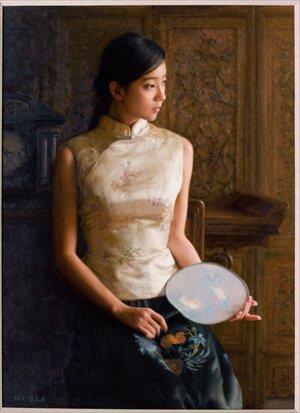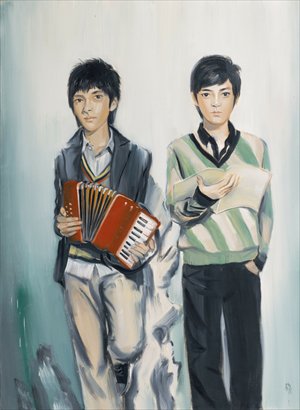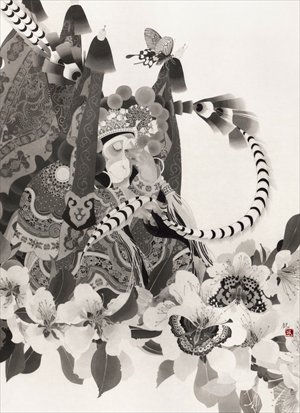Art cools off



The dizzy run-up in Chinese art prices tumbled over a cliff earlier this year and has continued their plunge. Poly Auction House concluded its autumn auctions in Beijing last week, pulling in 6 billion yuan ($964 million), roughly half its take from the year before. The auction house's annual take so far this year is also around half of last year's.
The situation was similarly grim in the spate of late November auctions in Hong Kong. Christie's, for example, pulled in 920 million HK dollars, a one-third drop from the 1,394 million Chinese artworks the year before.
In short, speculators have pulled out and are seeking their luck elsewhere.
"The bidders see art auctions as a kind of investment," said an industry insider who requested anonymity so he wouldn't alienate his friends in auction houses. "They hope that they can earn profit from their purchases. But the lack of a sense of aesthetics, know-ledge of art and capability to judge good art made them lose a lot of money in recent years."
A decade ago, there was essentially no market for contemporary Chinese art. But particularly in the last few years, there has been a breathtaking rise in value, a boom followed by an inevitable bust.
"Contemporary arts are not doing so well this year. The bidders who were once so obsessed with them are losing their enthusiasm," the insider said. "Years ago, people thought highly of their growth potential in the medium- to long-term. But now they are coming into the realization that most of the contemporary art they bought was overvalued."
The art market is hardly the only part of the economy to see speculative run-ups in prices. People have long been waiting for the property market to crash, and investors are driving up prices in jade, wine, stamps, racing pigeons, Tibetan mastiffs, carved walnuts and specialty mooncakes.
Highlights at this year's auction include the Imperial Jade piece Shuicheng, which fetched 49.5 million yuan, and a Guangyunlou book collection, which auctioned for 75 million yuan.
Similarly, on December 6, Beijing Council International Auction Co. held an auction for personal items belonging to Liang Qichao, a renowned scholar, and his family, who lived during the late Qing Dynasty (1644- 1911). The event lasted for three hours, and all of the 146 items up for bid were sold. Total sales amounted to a reported 67.1 million yuan, with the items, including personal letters, books and manuscripts going for much higher than the estimated price.
Renowned painter Zhou Chunya's Lüsede Heigeng: Mingpai Shizhuang auctioned for 7.9 million yuan, a disappointing price compared to 6.94 million yuan five years ago. Two other Zhou's works, Hua (Flower) and Taohua Goushi (Peach Blossom and Stone), up for auction also disappointed.
Despite the market dip, some Chinese contemporary art continues to sell at strong prices. 2008 Beijing (2005), an oil painting by Lui Liu, sold for 19.6 million yuan.
In 2010, China's fine arts annual revenue was a total of $3 billion, overtaking the US. In 2011, China took in 30 percent of global sales, according to statistics from Art Market, an art market research company, showing that the Chinese art market is still one to watch.
Total annual sales for Poly Auction House thus far are 6.1 billion yuan, 2.3 billion yuan from the autumn auction. In 2011, Poly Auction House total sales reached 12.1 billion yuan, 4.9 billion yuan from the autumn auction. In 2010, these numbers were 9.2 billion yuan and 5.3 billion yuan, respectively.